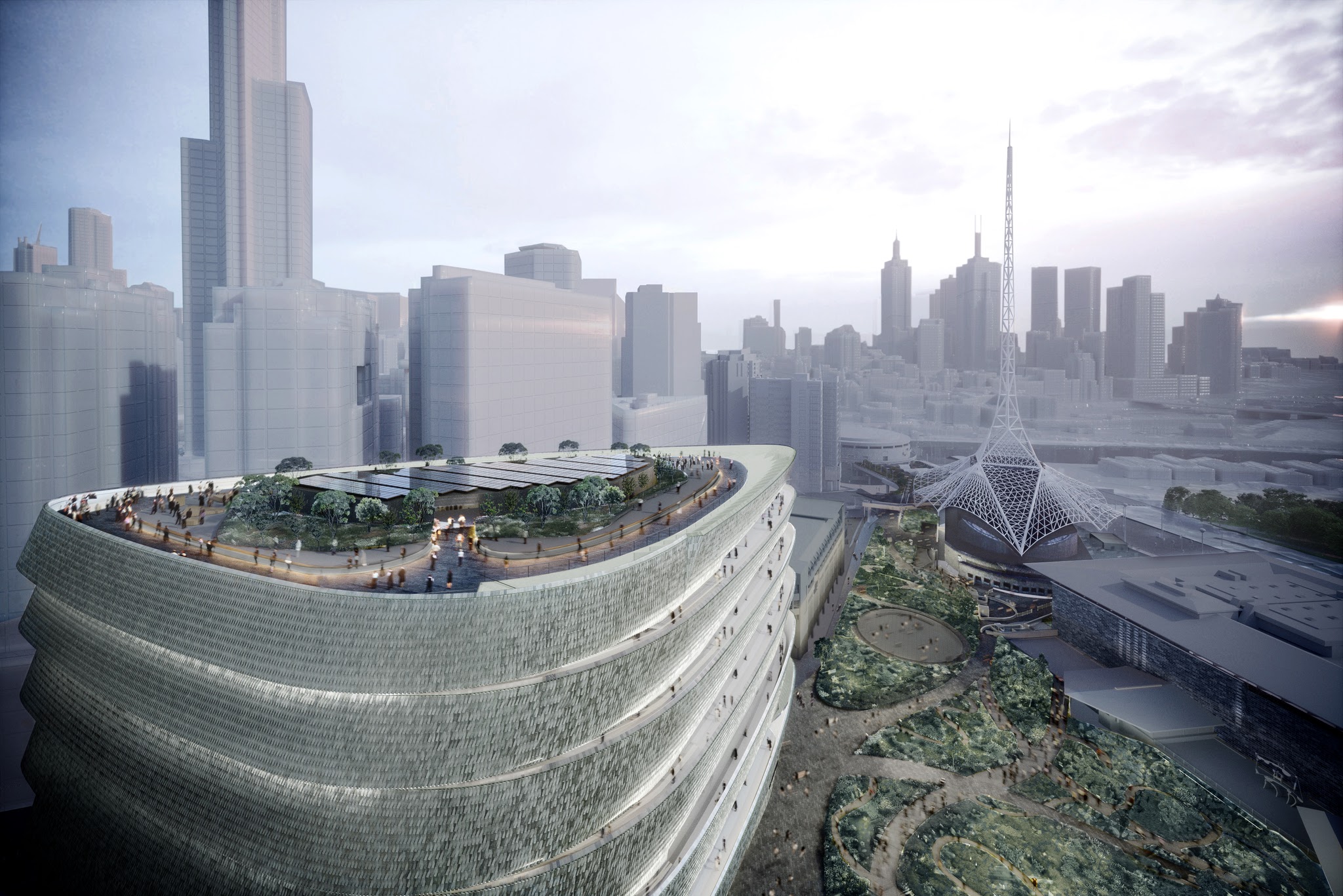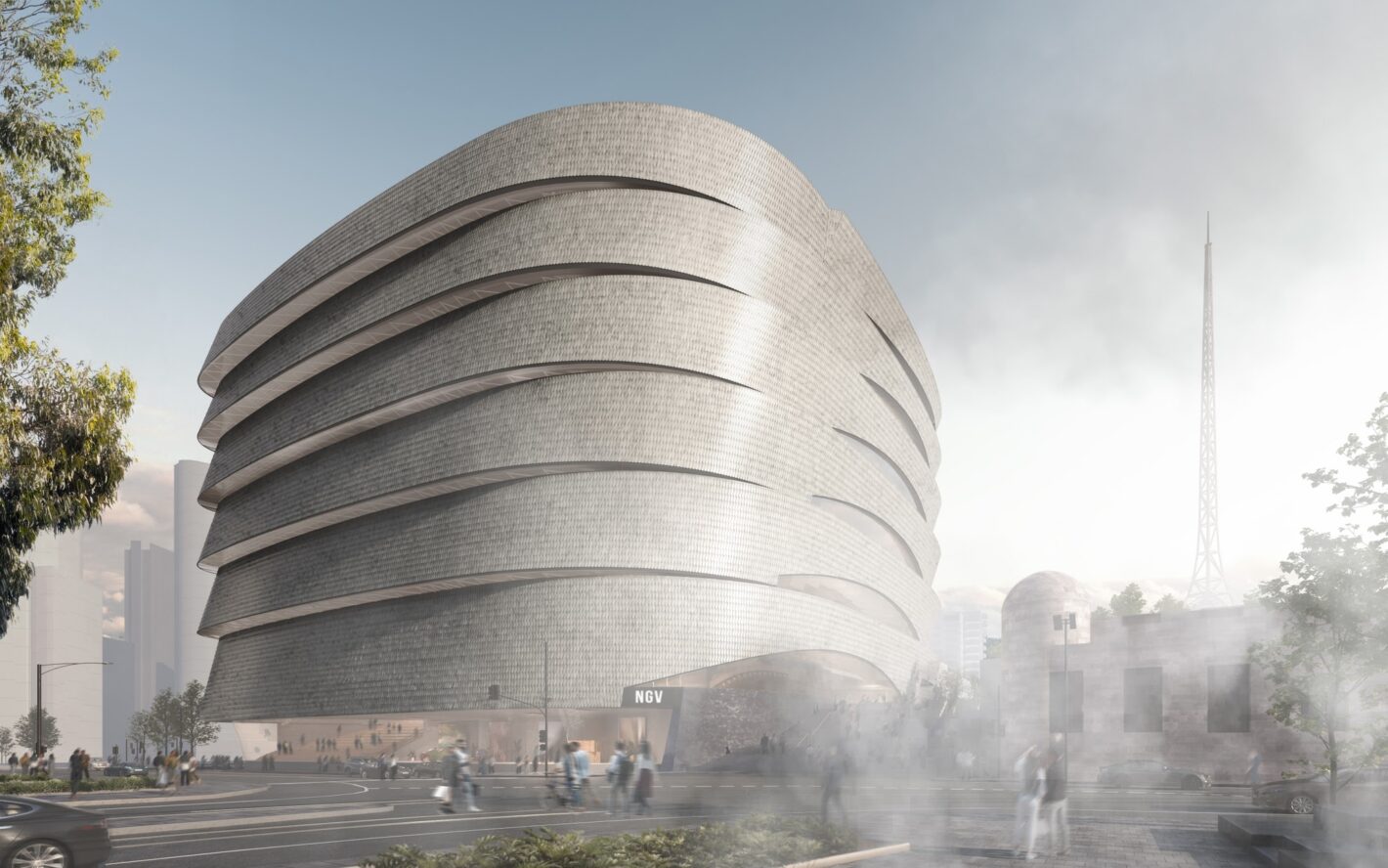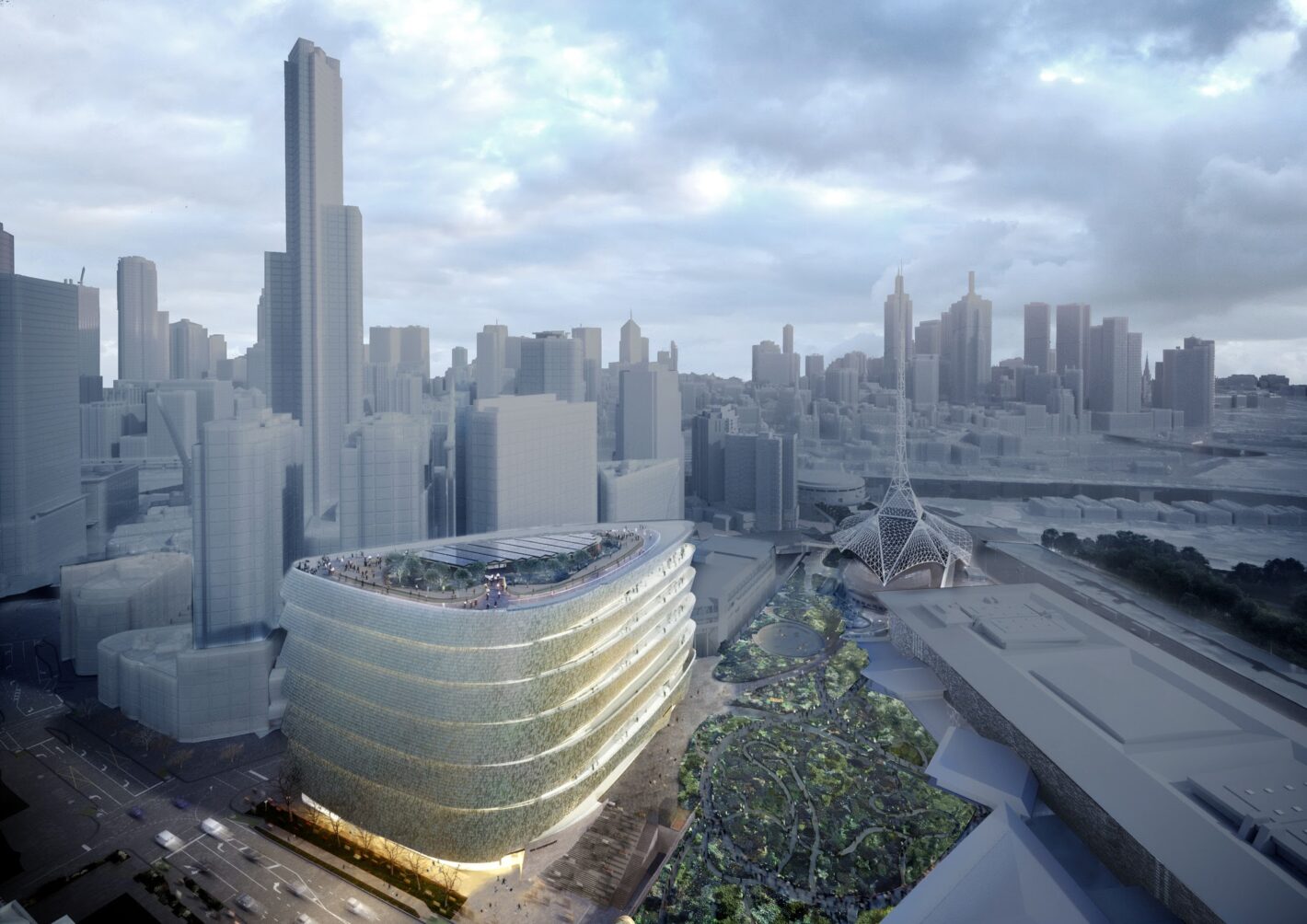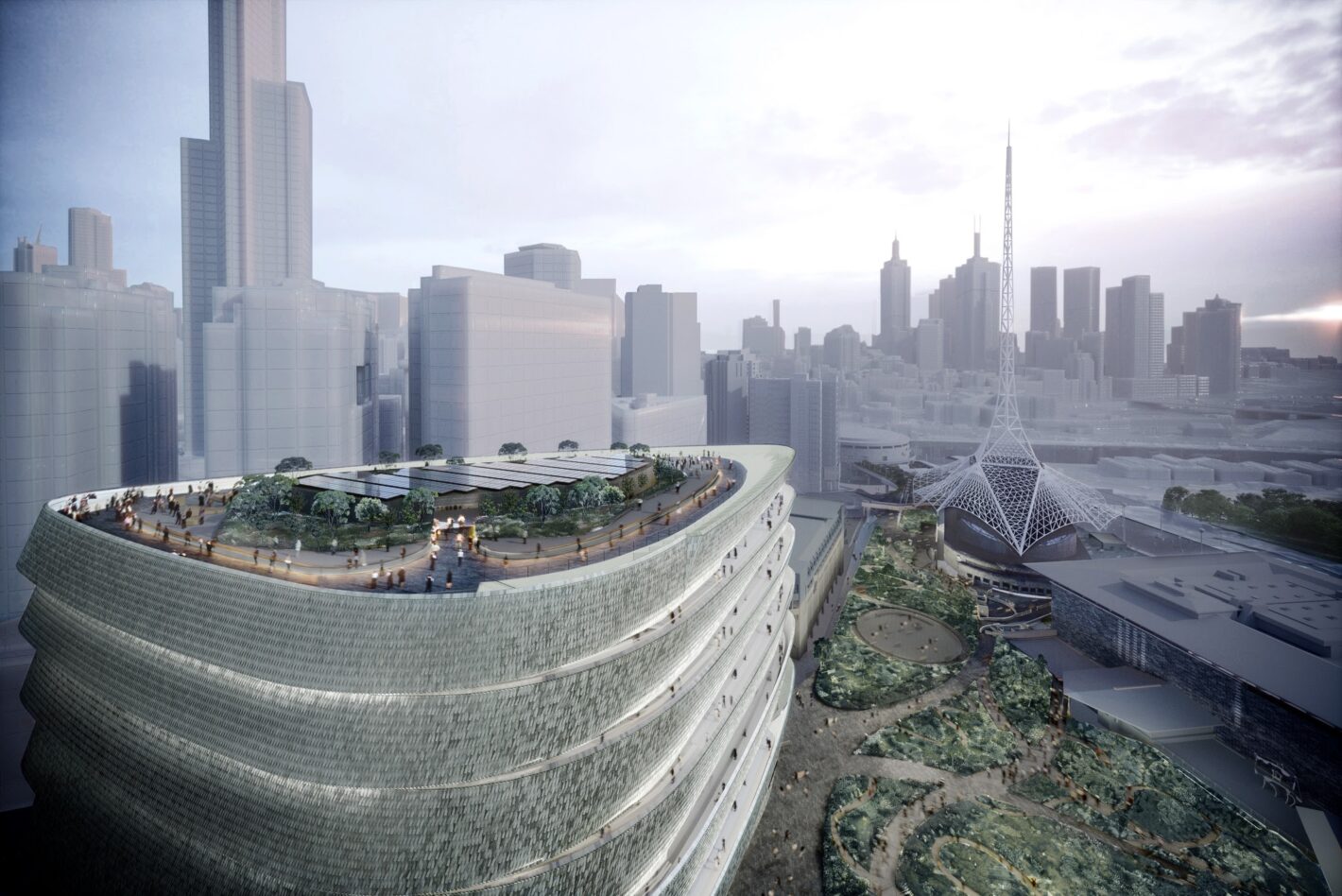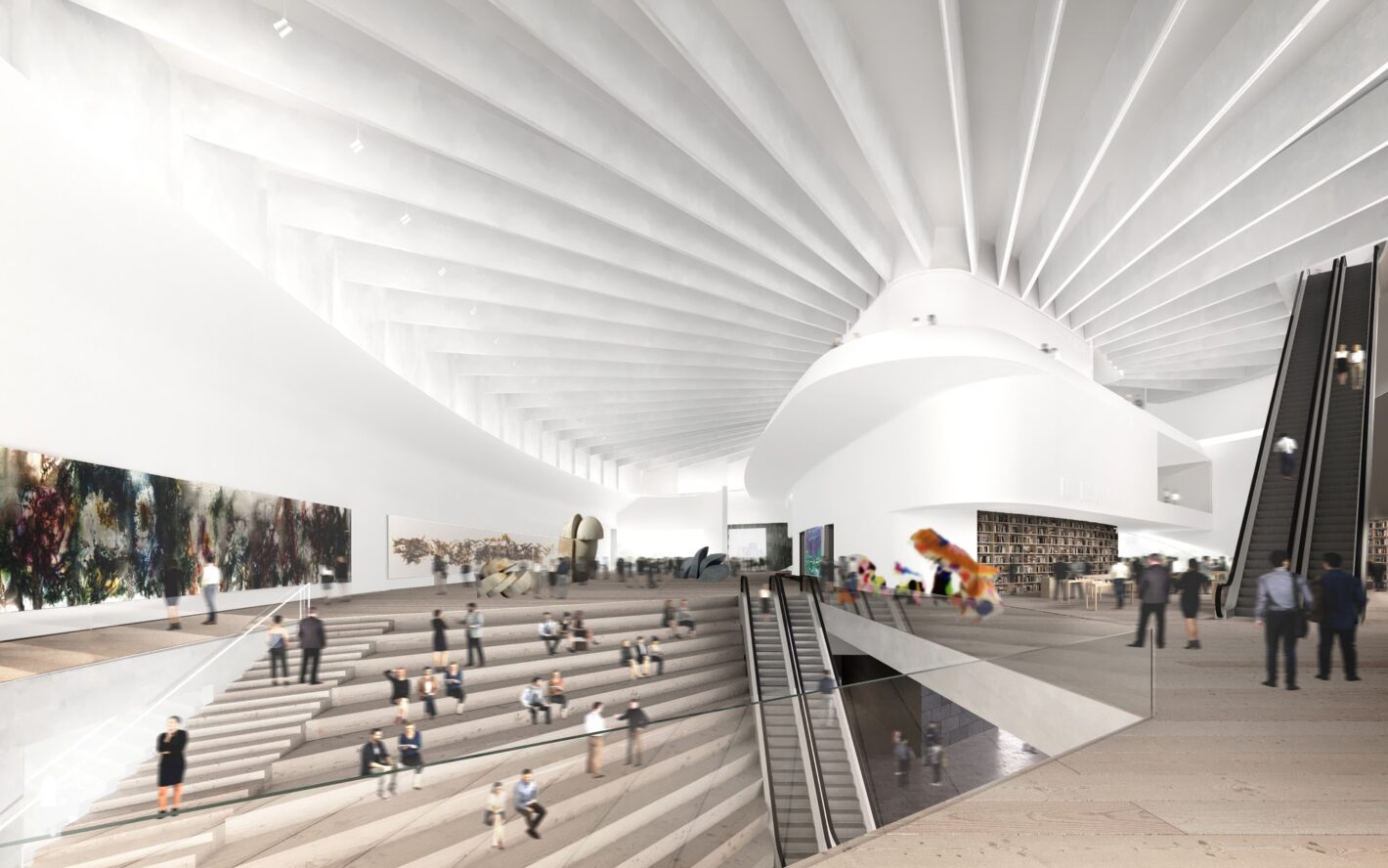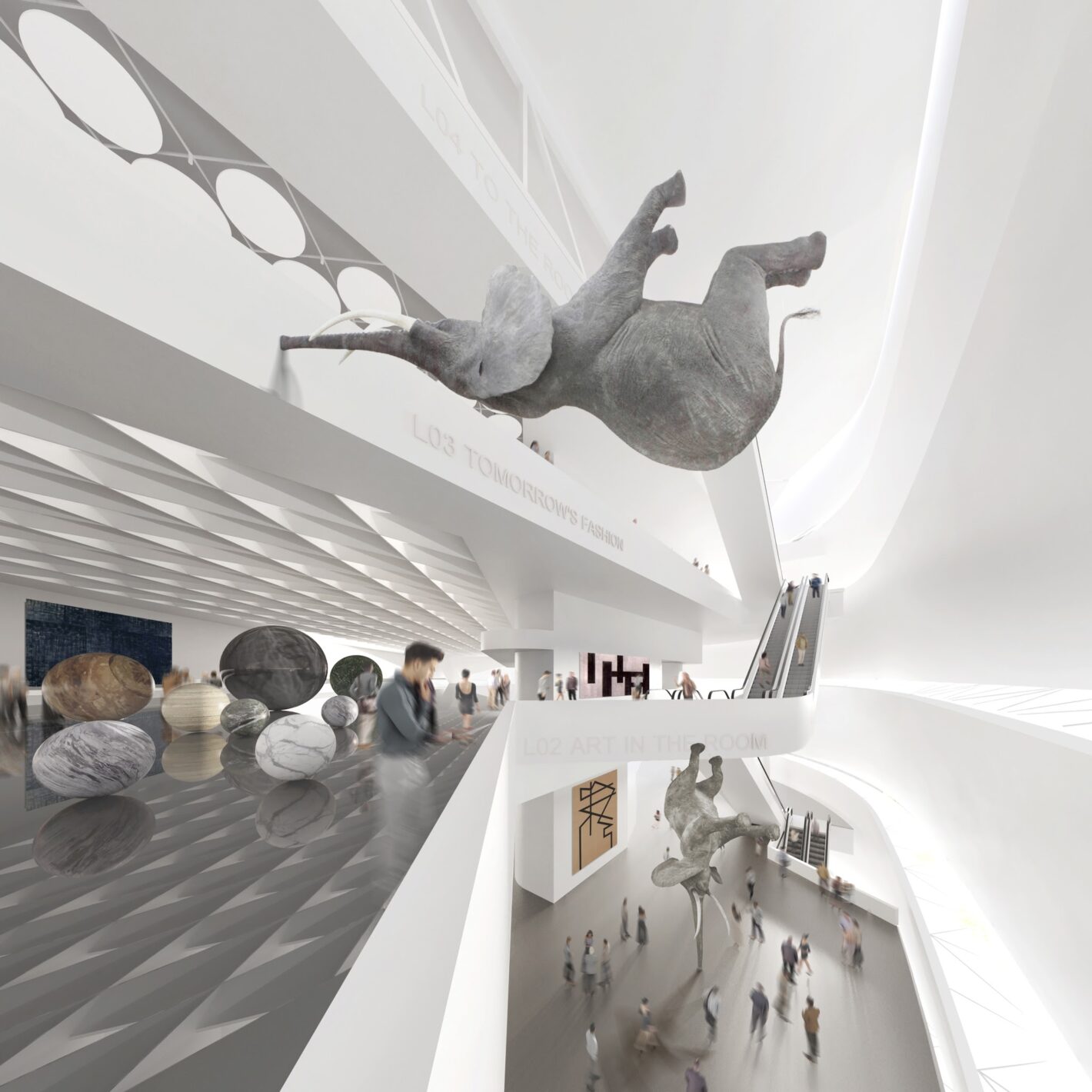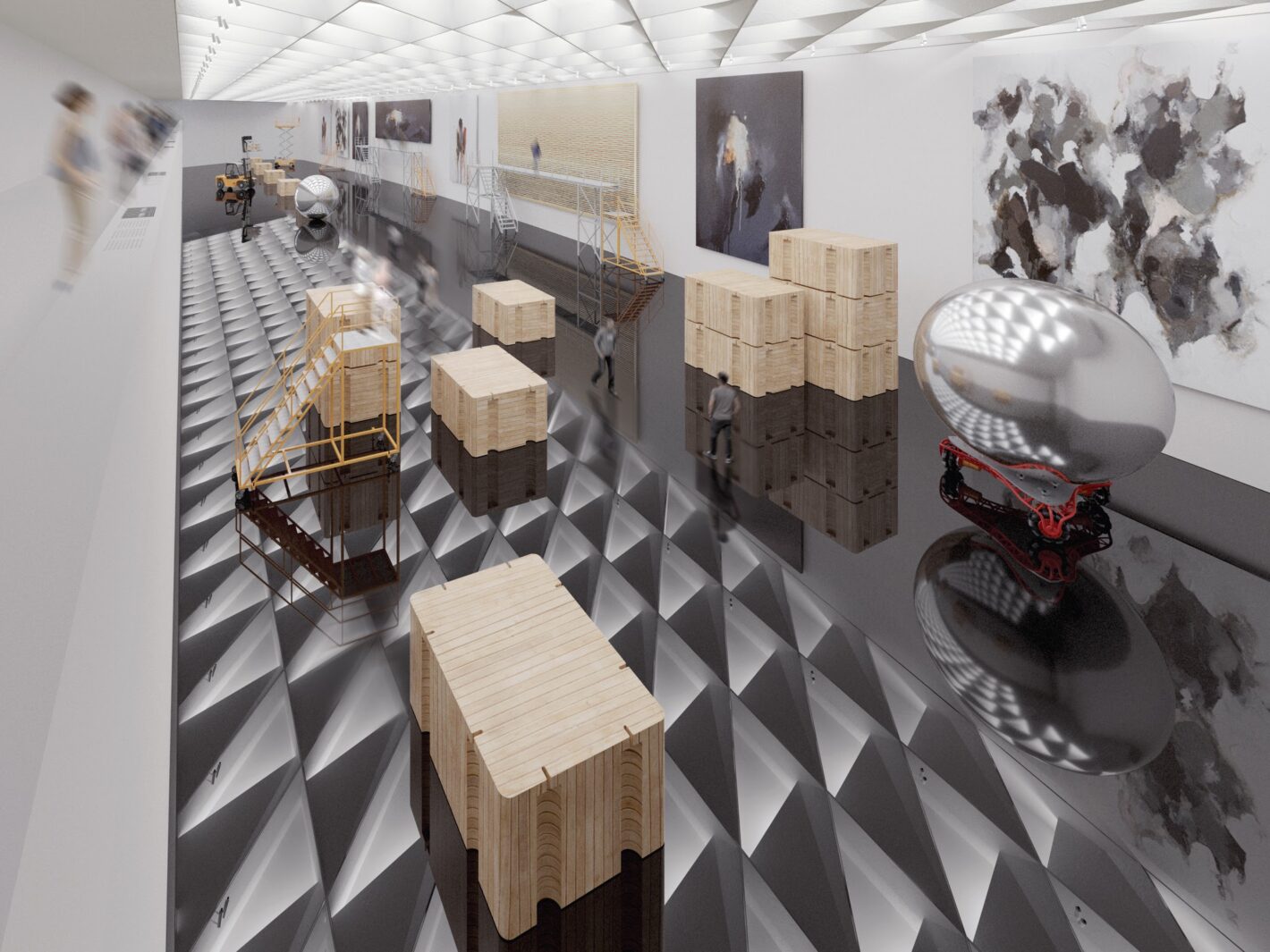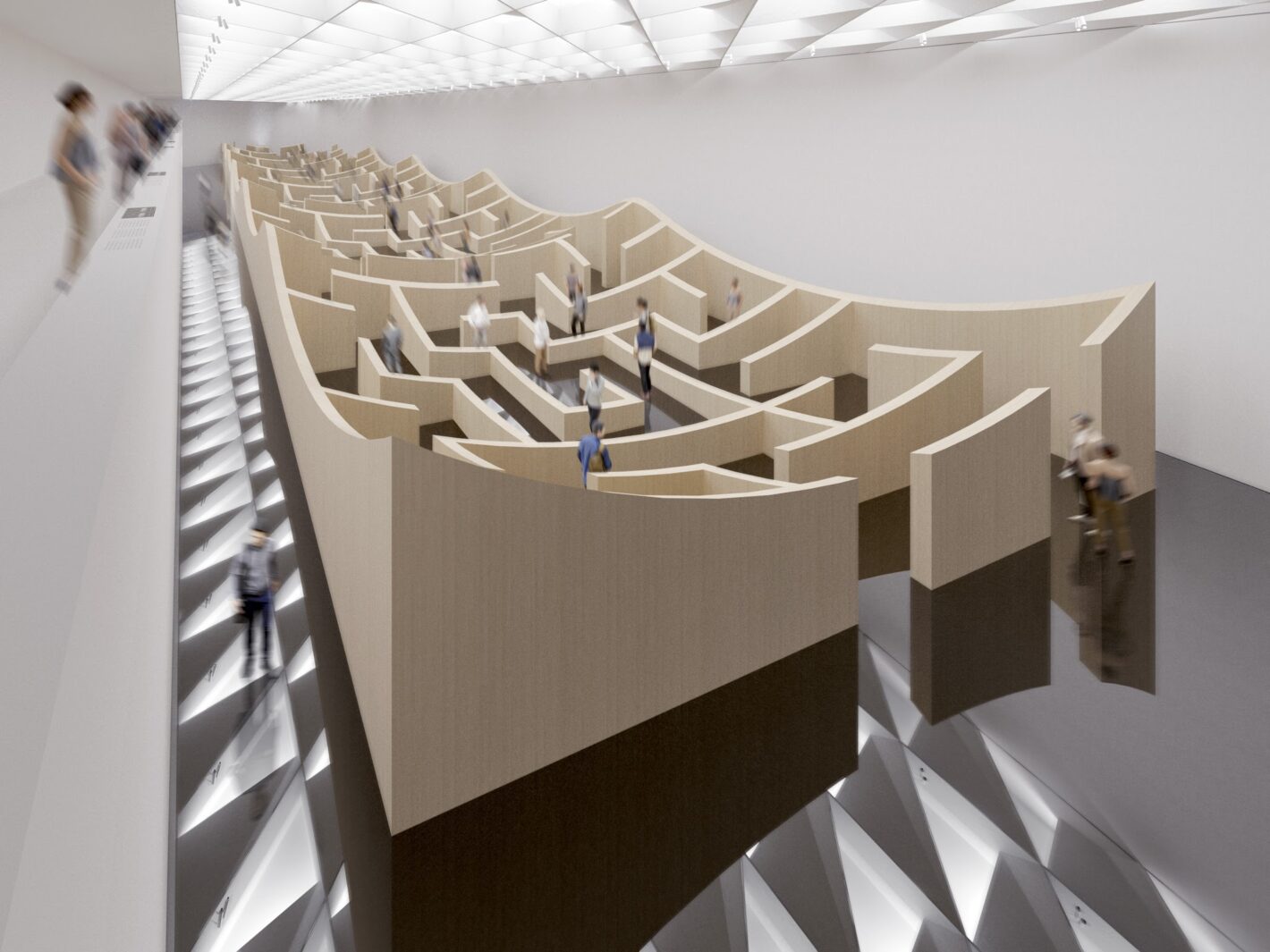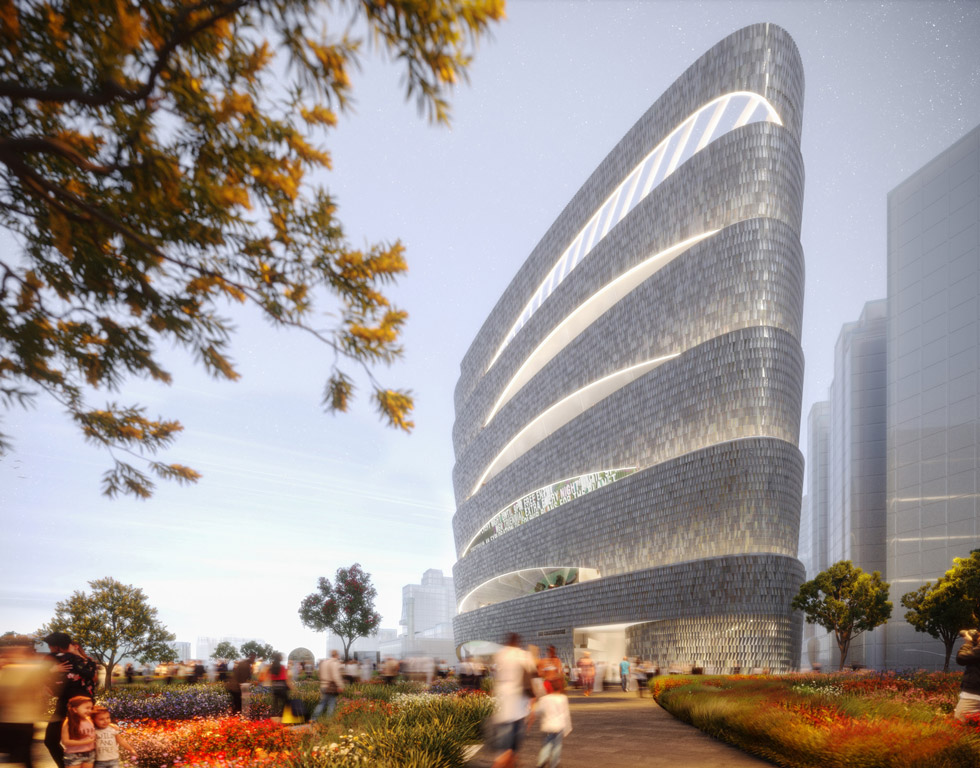The National Gallery of Victoria (NGV) Contemporary Design Competition called for a landmark building that delivers best-in-practice gallery design. The universal concepts of ‘Time, Gravity, Light’ are embedded in all aspects of our design vision and have informed the way we have shaped and moulded the building and spaces within. These three concepts are all interconnected in the universe: gravity warps and ripples in space, time is an invisible force that we all sense and light, whether natural or introduced, travels through the fabric of space and time. These are the vital constituent in the design of gallery spaces.
The concept was developed from historical research of the site, which revealed information on the sedimentary build-up of the earth. Its colourful layers, visible in core samples of the ground immediately below the site, have been formed over time through gravity. The shimmering outer surface of iridescent glazed ceramic tiles is evocative of freshwater middens that once dominated this riverfront location.
Expand ContentThe form we proposed was sliced to create a stratum of gallery floors. The building skin was wrapped, bent and folded to draw the Melbourne light into the interior spaces, while offering unique views of the Arts Precinct, city and gardens beyond. The circulation experience was designed to bring the fourth dimension of time to the dramatic three-dimensional space. This was achieved by emphasising the experience of movement and amplifying the changes in diurnal and seasonal light.
The Arrival Gallery is conceived as Melbourne’s new living room. Cognisant of the NGV’s changing needs, this vast hybrid public space is suitable for international events and artworks of immense scale. Open on three sides, a unique structural solution delivers an expansive column-free room, with mezzanines and balconies at upper levels. From here the visitor has an intuitive experience of circulating through the building to large column-free galleries, smaller galleries and ancillary spaces of different heights and characters.
The NGV Contemporary was conceived to maximise flexibility and allow for multiple configurations. The mezzanines, for example, offer different vantage points and unique positions for viewing the exhibitions, but also the installation and curation period. Effectively, in designing the space with this level of amenity, we have presented an opportunity for the gallery to reveal its operations as a dynamic and engaging cultural vessel.
Our shortlisted proposal is the result of a collaboration between Bates Smart and Smart Design Studio, together with Studioplusthree, Taylor Cullity Lethlean, engineering firms Arup and Eckersley ’Callaghan, and Studio Ongarato.
